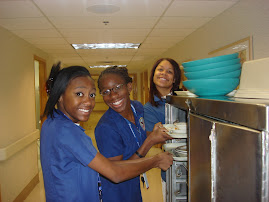The models that I chose to compare are the cognitive approach of Gagne and the prescriptive design model of Keller (ARCS). I chose these models for familiarity and interest. I am familiar with the nine ‘commandments’ of Gagne, though they have been presented to me in a different format. This is the style that is used by the mentors in my school district. Having had no experience in the world of education, I had some difficulty relating the language of educators into a language I was familiar with in medicine. After reviewing some of the models for this assignment, I have a much clearer understanding, and will also be able to put into practice a combination of each.
How are the two models of instructional design similar to one another?
The two models are similar to each other in several ways. Both gain attention of the learner. Gagne presents a stimulus and Keller presents relevance, both may encourage interest in the subject being taught, and show how the student might use the knowledge.
How do the two models of instructional design differ from one another?
The two models differ both in the way they are presented to educators, and in the way in which they model the effectiveness of their design. Gagne elicits performance, provides feedback and then assesses performance, while Keller is using strategies of confidence and satisfaction. It is much more rewarding to see a student ‘finally get it, or watch the proverbial light bulb go on’ when they put their learning into practice and see the relevance of what has been taught, then it is to have your words given back to you because they have memorized text or notes from a lecture.
Define the process for starting the design phase for a specific lesson you can use in your own curriculum. You should describe your potential audience (general characteristics, prior knowledge, demographics, and motivations). List any societal factors that may affect your lesson as well.
I will dabble in the ARCS for my lesson, as I am very tired of the 9 commandments, but did get a laugh out of the way they were presented on the blog. I related to each of those!
First, the lesson in my curriculum that I will apply this to is my lesson on Asepsis. This lesson is fairly simple and combines science with common sense. (Okay, everyone knows they should wash their hands to get rid of germs, but do they know that 98% of the time, they miss significant parts of their hands, or what bugs can crawl into a callous or torn cuticle?) My audience, 12th graders interested in a career in medicine. Demographics range from the side of the city with the country club, to the side across the tracks. Not all of my students are fluent enough in English to understand some of he medical terminology, and many do not own computers, or only have access at school.
My design phase will begin with getting the students attention using pictures of persons infected with bacteria that has gotten through the barrier of skin, and diseases that were transferred from the hands of a healthcare worker to their patient. I may be crossing over into relevance at this point, I am sure in this lesson we will cross between the motivation and appeal multiple times.
sitting
13 years ago



Have you met this happy character? http://www.henrythehand.com
ReplyDeleteI am all about motivating my kids to wash their hands better, but the CDC is taking it to a new level here.
I had a (super-geek, here) personal revelation with hand washing when I started meshing my fingers together really vigorously during washing, which splatters the dirty droplets on the sink sides. This visualized the cleaning so well that I have done it this way ever since. Seeing (dirt) is believing.